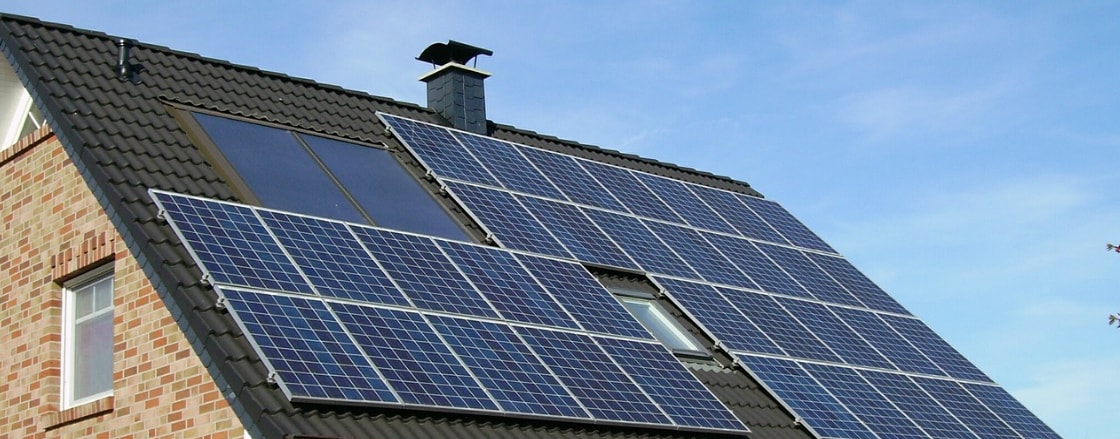
Green energy for the household, produced from own solar system.
Solar panels
The main component of photovoltaic system are the solar panels, the inverter and the mounting system. The solar modules are the most expensive part of the whole system, they convert light in energy. The most used material for producing solar panels is the silicon. During the day the electricity is generated from the panels and during the night the enrgy stored in the batteries is used
Solar generator
The solar generator consists of electrically connected photovoltaic modules. The different types of modules on the market differ in the semiconductor materials used by the production of the solar modules. The decision which type to use depends mainly on price and efficiency of the module. The efficiency shows how many percent of the sunlight is converted in electricity by the module.
For example end-users who have wide mounting area, which receives plenty of sunlight, can affort buying cheaper and less effective panels. But if you are limited on mountign area or sunlight, more expencive and respectively more effective panels should be selected.
Inverter
The iverter converts the produced from the solar panel direct current (DC) into alternating current (AC), which is used in the household. The inverters also fulfill functions which are relevat for the monitoring and the safey function of the whole system. The solar generator and the inverter should be compatible, otherwise the system won't work optimal. The capacity of the inverter shouldn't be less than 90% of the solar generator's capacity to prevent energy losses.
Energy storage (battery)
The energy storage accomulates unused solar power generated during the day and makes it available during night and on low-sunlight days.
Main parameters of the battery:
Battery chemistry. There are two main types available:- Lead Acid
- Lithium
Lead Acid is very cheap to install but it is inefficient and won’t last for long. Flooded lead-acid batteries have to be refilled regularly because the electrolyte that fully submerges the battery plates evaporates during charging. The battery enclosure needs ventilation to prevent hydrogen gas from accumulating to dangerous levels. Also lead-acid batteries should be properly disposes because they are toxic. Plastic containers and covers of old batteries can be recycled, re-used in new battery cases.
Lithium (ion or iron phosphate) are more expensive than lead acid batteries, but much better. They last far longer and deliver more kWhs (units) during its lifetime. Full discharges are not necessary to prolong life. They are solid, so don’t require refills or maintenance. Properly recycling of Lithium batteries is encouraged.
Capacity is the amount of energy in kWh that battery can store. For the end-user the „Usable“ or „Nett“ Capacity is of importanse. New batteries operate (should operate) at 100% capacity; replacement occurs when the packs fade to about 80 percent. In addition to normal capacity fade, cold temperature lowers the capacity, especially Li-ion. The capacity loss of a Li-ion Energy Cell is about 17% at 0°C (32°F), 34% at –10°C (14°F) and 47 percent at –20°C (–4°F).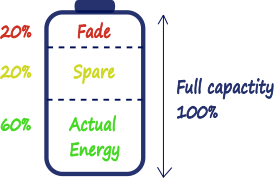
Figure 1 Battery capacity.
Cycles. The most critical consideration is the „battery life“, which gives the number of discharge/charge cycles the battery can provide before capacity drops to a specified percentage of rated capacity. Batteries from different manufacturers may have the same capacity and energy content and be similar in weight. But design, materials, process and quality influence how long the battery will cycle. Accordint to the most of the battery producers a Li-ion battery can be cycled between 300 and 500 times before the capacity drops to roughly 80 percent. This drop goes mostly unnoticed to the user. A typical lithium-ion battery, for example, has a cycle life of 4000-8000 cycles, while low-end lead acid batteries could have cycle lives as short as 800-1,000 cycles. The avergae household needs about 250 charge/discharge cycles, according to this the „cycle life“ of Lead Acid batteries is about 6 to 12 years and from the Lithium about 16 to 25 years. The conditions is which the batteries are stored play a significant role in their life cycle. The optimal ambient temperature is between 20°C bis 25°C.
Power output of the battery schould be compared to the power of the consumers.
Space requirement for the solar panel system
Before purchasing the photovoltaic system, the first thing to do is make sure that your roof, or the spot where you want to istall, is suitable. The orientation of the panels is crutual for the performance of the solar system. The perfect orientation is south. South – East and South-West orientations are also acceptable, but the accepted solar energy reduces with about 5 to 10 percent.
The optimal leaning of the panels is about 30 degrees. If mounted perpendicular on the house wall the gained energy can be reduceth with more than 40 percent. There should't be any obstacles between the panels and the sun direction, which may prevent the sun light from falling directly on the solar panels.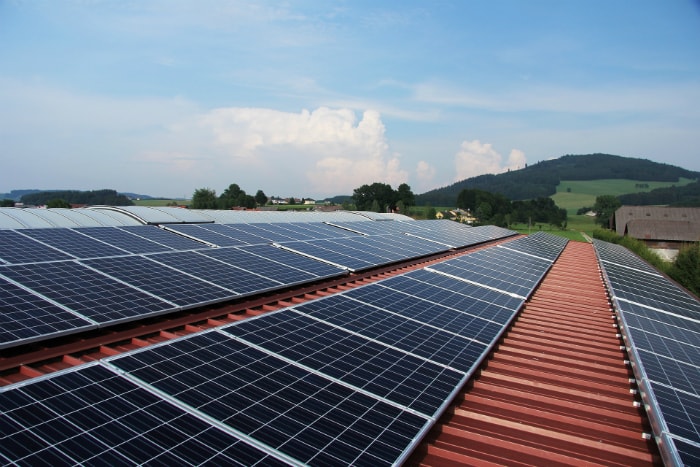
Figure 2. Mounting solar panels.
Size of the solar system
The elecgrical power (nominal power)of one photovoltaic installation is measured in kilowatt-peak (kWp). It shows the maximal power according to standardised test conditions and in this way different models can be compared. For optaining about 1 kWp, solar panels with surface of 8 square meters are needed. The performance of the panels fluctuates according to the intensity of the sun lighght and the change of the seasons.
If the average household consumes about 11,000 kWh per year and 250 watt solar panels are used, we can use the high and low panel production ratios to calculate how many solar panels needed on average. Thus, the typical homeowner will need 28 – 34 solar panels to cover 100% of energy usage (dependent on location and roof size).
Using solar energy not only bring profit for the house hoold, bu also unloads the electrical network and contributes to the environment.
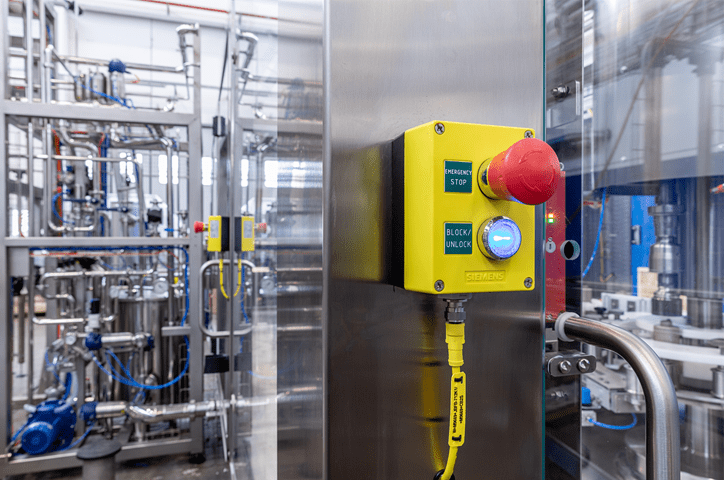
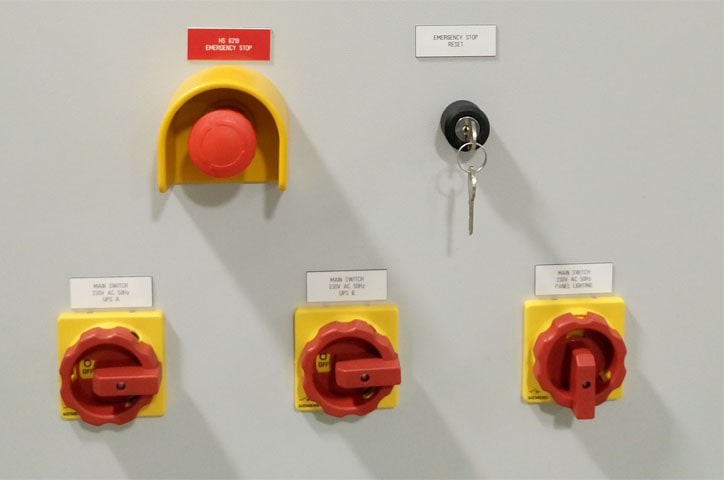
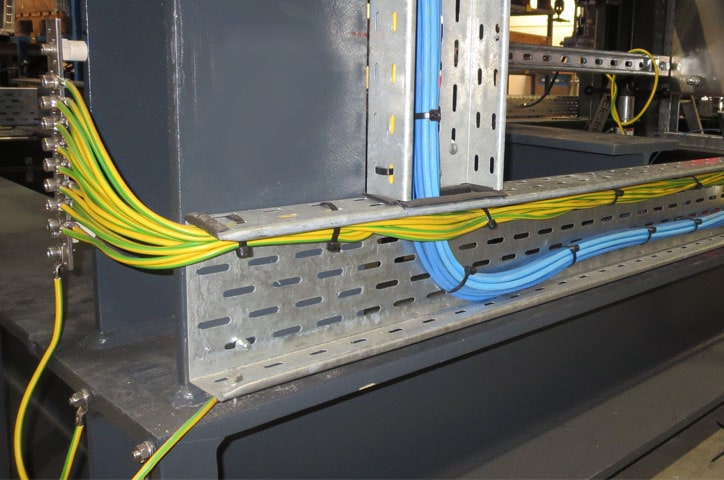
0 COMMENTS //
Join the discussion